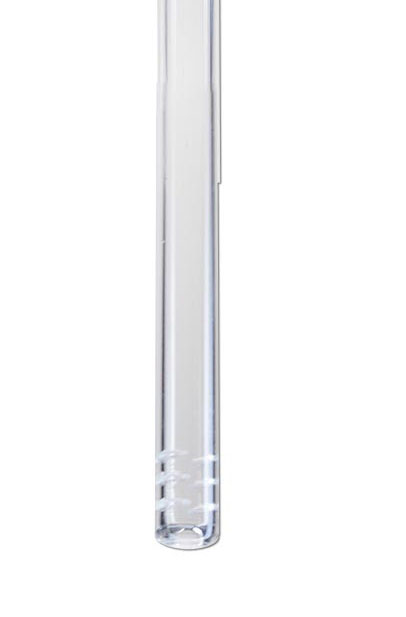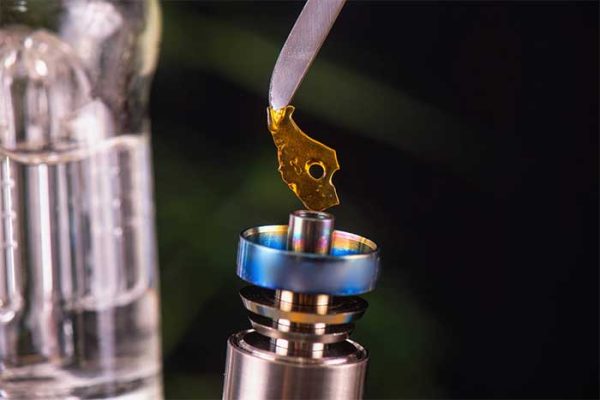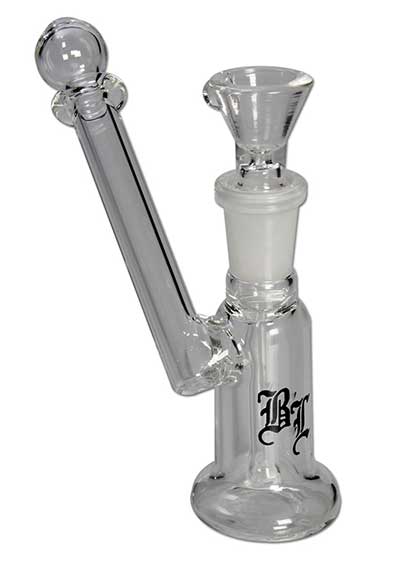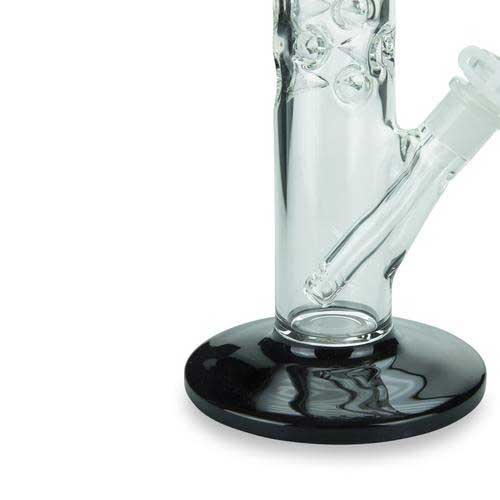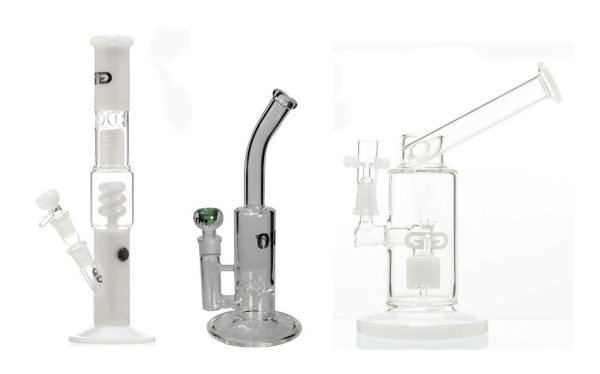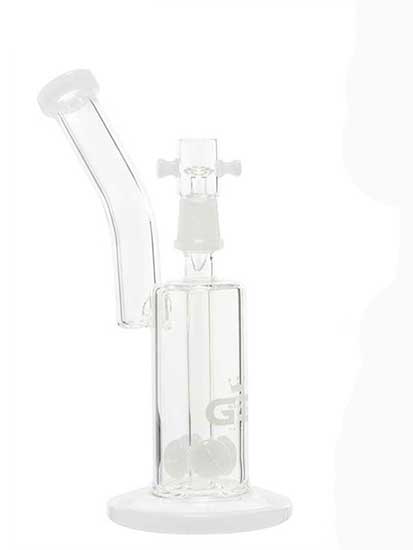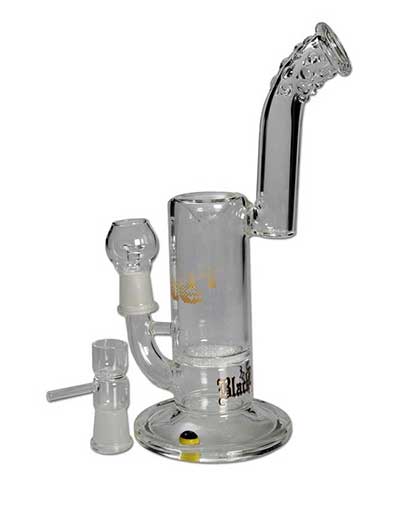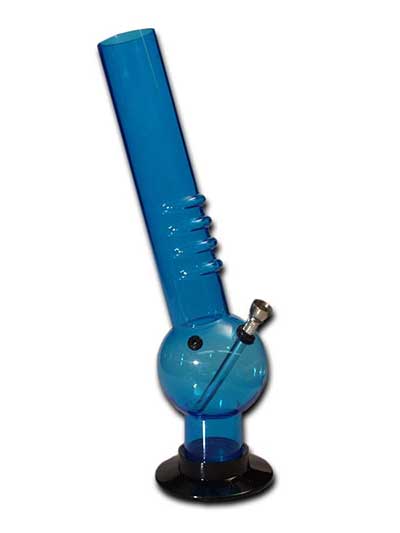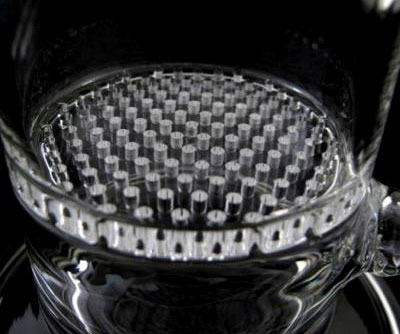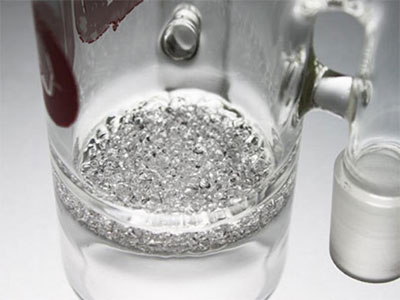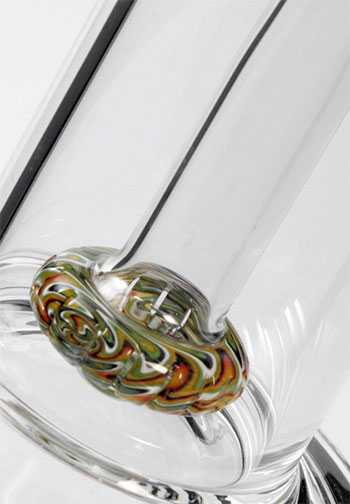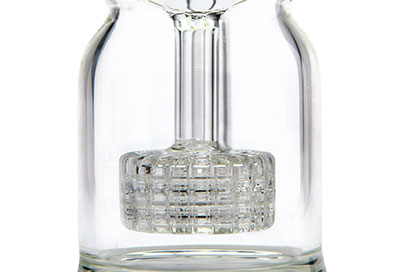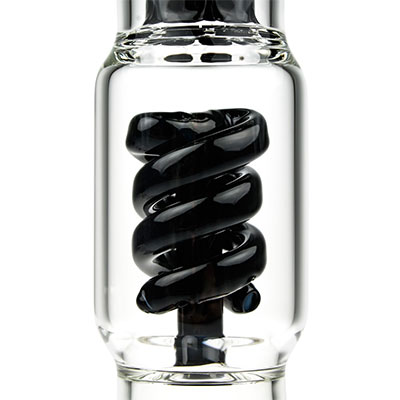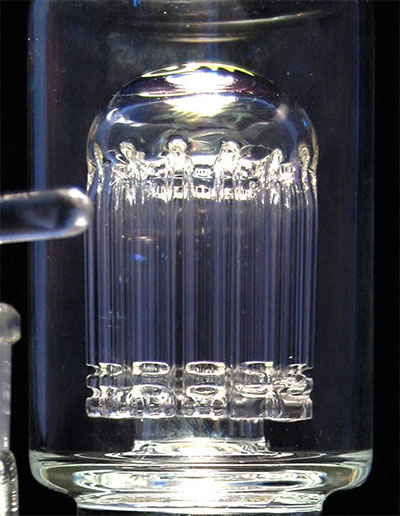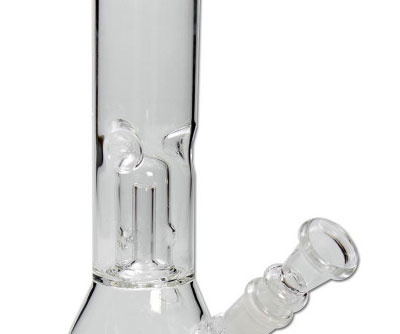The Bong Guide - Interesting facts about the bong
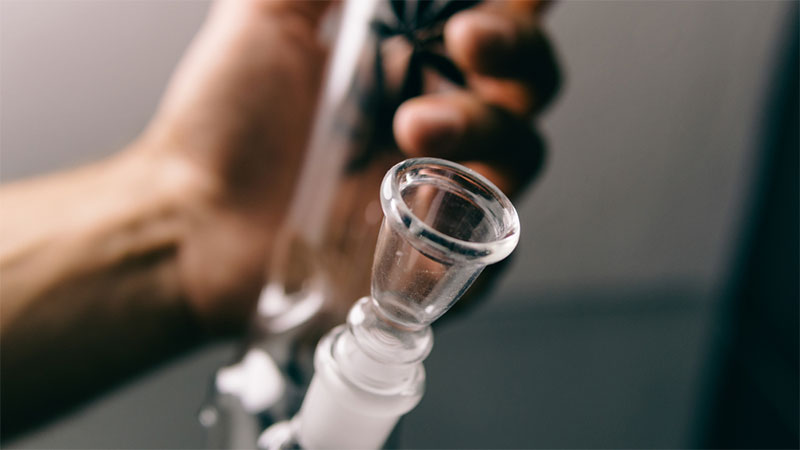
You will find everything you need to know about bongs in this article. The different types of bong, their use and much more.
You will certainly know them, the bong. They come in many different shapes and colours with different functions. The materials can also be very different. This is no wonder, because they have been around for a long time.
What are bongs?
A bong is a water-filtering smoking device that produces a smoother, cleaner and milder smoke than many other smoking devices. The smoke passes through the water and certain residues and water-soluble molecules are filtered out. In addition, the smoke is cooled by the water and is therefore milder in the bong, but also usually denser.
Bongs can be made of a wide variety of materials: wood, ceramic, glass/borosilicate glass or metal. Meanwhile, high-quality glass bongs made of borosilicate glass are particularly popular. They can be cleaned without leaving any residue, have an absolutely neutral taste and offer a smoking experience that many users appreciate.
Structure of a bong
A bong essentially consists of 3 parts:
1. the actual body: this is usually belly-shaped or cylindrical, there are many different shapes.
2. the adapter/diffuser: this is the tube that is inserted into the bong and immersed in the water.
3. the glass head is in the adapter
4. some bongs also have other parts such as pre-coolers, integrated percolators etc.
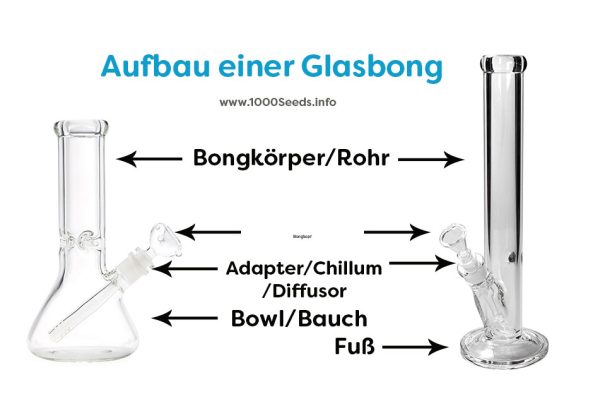
Nowadays, there are hardly any glass chillums where the head is firmly connected to the tube that is stuck in the bong. Meanwhile, the plug-in chillum/diffuser and glass head are 2 parts. This makes for much easier handling and is also easier to clean.
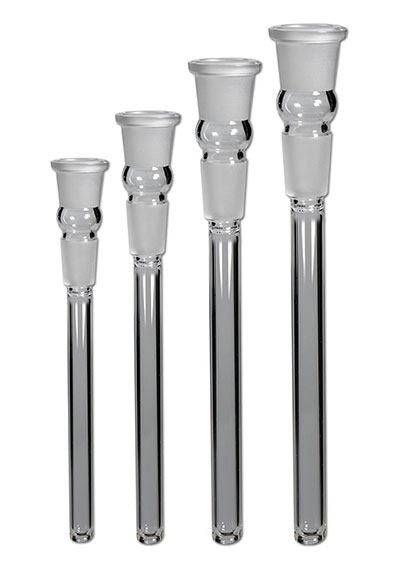
If the adapter has slots or holes in the lower part, it is called a diffuser or slot diffuser. These have the effect that the smoke is swirled better and finer in the water.
A brief look at history
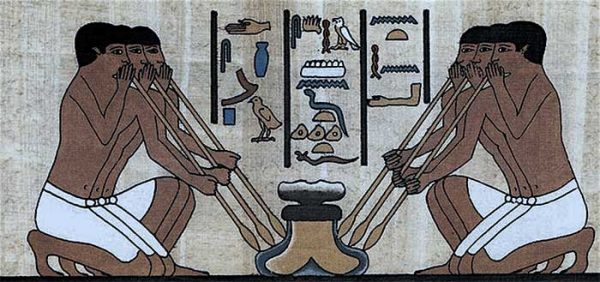
Many believe that the bong originated in Asia, but this is a mistake. Only the name comes from the Thai word "Baung". This means roughly: "pipe made from a bamboo cane". In the 1960s, the hippies brought the name to our country. The oldest find of a water pipe, however, was made in Ethiopia. Bongs carved out of gourds were used for cannabis consumption even back then, which was proven by the remains on the gourds. So you see, even before our Asian friends, there were people who appreciated the benefits of a hookah.
Of course, the hippies didn't just bring the name with them from the East. The bongs quickly developed into a popular method of consumption. And it didn't stop at bamboo either, so the first glass specimens were created. These were rather small vases into which a chillum was inserted, a sealing ring ensured that it did not draw air. Even today you can find them under the name Hollandbong. Most hookahs today, however, are constructed differently. They are more reminiscent of laboratory devices, which is not so surprising, because that's where they come from. In Heidelberg, some stoners grabbed the devices from the laboratories and converted them for their own purposes. The usual standards of laboratory technology can therefore still be found in the various bongs today. So spare parts can be quickly replaced or extended with the right grind. Just as it is done in the laboratory.
Glass bongs and the corresponding adapters and glass heads can have a 14mm (NS 14) or an 18mm (NS 18) cut. But more about that later.
Use
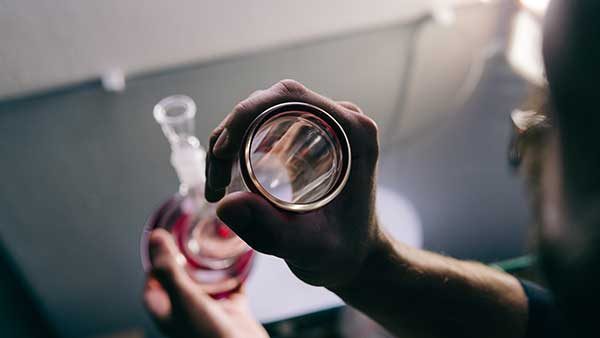
As mentioned above, bongs have been used for cannabis consumption for centuries. Of course, all kinds of other herbs and extracts can also be consumed with them. However, since smoking produces harmful substances, they are more likely to be found among pleasure smokers than among patients. This does not mean, however, that they cannot be used for the latter.
In oil bongs or bongs for dabbing, concentrates are vaporised, there is no combustion and it is therefore a gentler form of consumption, which is often also used by patients.
The advantages of a bong
Two advantages are obvious when you take a closer look. Plant residues, embers and ash are filtered out through the sieve and water. As you can imagine, inhaling these is not exactly pleasant. In addition, the smoke is cooled down by the water or certain types of construction. Thus, it is much more pleasant than the smoke of a pipe, as well as much better tasting. Another advantage is that the effect is almost immediate and usually stronger. Due to the volume of the bong, the entire volume of the lungs is used, which can absorb more active substances at once. So it is not surprising that it is a popular method of consumption for many.
- Cooler and milder smoke
- Many users report a more intense smoking experience
- The effects set in more quickly
- A certain amount of tar and other pollutants are filtered out by the water, although not as much as with vaporising
The different forms of bong
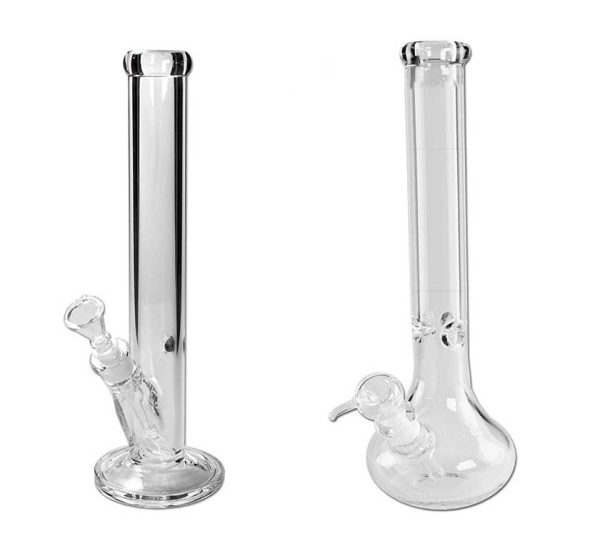
Roughly speaking, bongs are divided into forms that have a belly or only a tube. In addition, there are an infinite number of special shapes. For many users, bongs are indispensable, while for others they seem too heavy. There are glass and acrylic bongs in all sizes: from the tiny microbong to the enormous larger-than-life glass bong. And there is a whole lot in between.
Belly bongs
One advantage of bongs with a belly is that they can absorb more water and thus the smoke can be cooled better. In addition, they have a lower centre of gravity due to the weight and the belly. This makes it less likely that they will be knocked over. They also have more volume for the smoke, so you can inhale more of it at once. One disadvantage, however, is cleaning. It is more difficult to get to all the places to clean them with a brush. A secret tip for this is warm water and baking soda. The baking soda also loosens the residue on the belly.
Tube bongs/cylinder bongs
Bongs with a tube are very easy to clean. Their straight shape makes them easy to clean with brushes. They are also easier to store and do not take up as much space as a bong with a belly. However, they are not quite as stable and large ones in particular can easily tip over. They are usually more comfortable for beginners, as less smoke is inhaled due to the volume. You should be used to a large volume. If you can't inhale the smoke all at once, you will get stale smoke and it won't taste very good.
Special forms
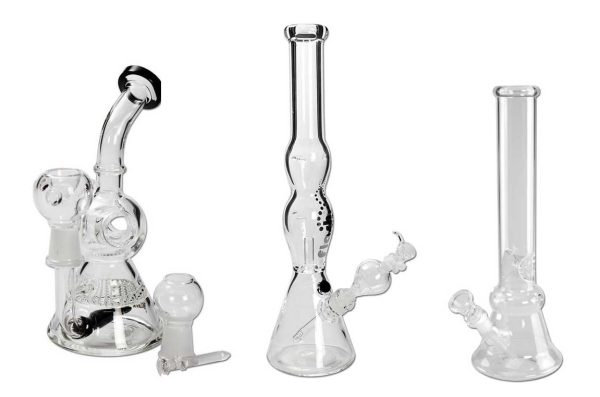
In addition, there are a lot of special forms such as double-chamber or multi-belly bongs. This is an attempt to improve cooling or increase volume. Of course, there are also some that only allude to the visual appeal. But they all have one thing in common: it is difficult to clean them, but with a little experience it is possible.
Glass bongs made of borosilicate glass with a wall thickness of 7 or 9mm are very suitable for daily use and are anything but delicate. Of course, you should not throw your borosilicate bong off the balcony, and the irreversible principle also applies here: stone or glass, the stone floor always wins. Everyone who has ever thrown their bong onto a stone floor knows this principle.
The different types of bong
The choice of different types of bong is huge and there are also the different materials and their advantages and disadvantages. Therefore, I would first like to show you the different types and their differences.
Standard bongs
Standard bongs include all bongs that are quite simple in design. They have a tube, sometimes with a belly and a simple adapter with a glass head. Over time, many different shapes have developed from the standard bong with different effects. I have always been a fan of large standard bongs up to 50cm high but that is always a matter of taste.
always a matter of taste, as with everything.
Minibongs
Minibongs are popular like bubblers because of their small size. You can easily take them with you everywhere. They usually have a height of 10-15cm and often have an extra small chillum. Many are made of thinner glass and the likelihood of accidentally swallowing water is greater due to the small height.
Ice bongs
Ice bongs have a constriction in their tube so that you can fill them with ice. This often consists of a kind of thorn or bobble that prevents the ice from falling through. This is an excellent way to cool down the smoke, making it very mild. Especially in summer, when the temperatures are warm, the cool smoke and the ice-cold bong is super pleasant. Except for the constriction, they do not differ from the standard bongs.
A little insider tip among ice cream lovers is frozen fruit. These give off their fruity flavour to the smoke. However, you should not eat them afterwards, as the pollutants from smoking make them inedible.
Bongs with smoke swirl
Bongs that swirl the smoke and thus also cool the smoke are also very popular. There are several methods to achieve this, such as diffusers, honeycomb or percolator bongs.
Diffusers are often attached to the adapter, while percolators and honeycombs are integrated into the bong itself. They are available as fixed or plug-in systems.
As the name suggests, a honeycomb looks honeycombed and thus forms an even wall of bubbles. With a percolator, on the other hand, the smoke is filtered twice with water. This is done in two ways, either by a shower percolator or a spiral percolator. The shower percolator pulls the smoke up and down again before it is filtered through several holes. If they are equipped with small tubes, it is often indicated how many tubes there are. The more, the better the filtration. With the spiral percolator, it is drawn through spiral tubes so that the smoke has a longer path in the cooling, i.e. the water. These bongs often offer a very cool look, in their construction as well as when smoking.
Hollandbong
The Holland bong is the aforementioned bong that was popular with the hippies. They resemble a vase rather than a device from the lab. Chillums made of metal or plastic are used, onto which a head can be screwed. These are often made of wood, stone or also metal. A rubber gasket provides the necessary seal. You can see this very often with acrylic bongs. They do not have standardised plug-in systems like most glass bongs.
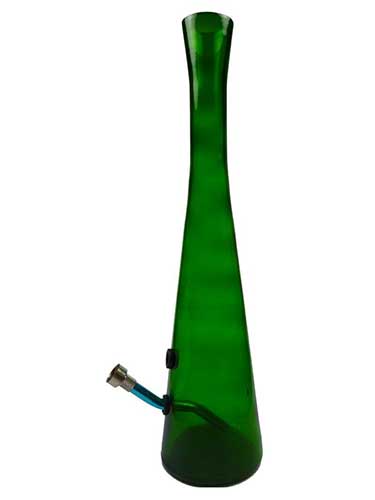
Bubbler
Bubblers are quite small bongs that are often no bigger than your own hand. They are more reminiscent of a pipe, but also use water to filter. Due to their size, they are well suited for beginners. However, due to the small size, the smoke is not cooled as much as with larger bongs. However, accessories such as a percolator or diffuser can also be found here.
GG Saxo Bubbler (Oilbubbler)
Dabbing or oil bongs
Dabbing bongs are also smaller than normal ones. The difference to other bongs is the head. Dabbing involves vaporising extracts such as wax, shatter or oil. So it is not burned directly with fire, but applied to a previously heated surface. This has the positive effect that less harmful substances are inhaled. In the head there is a nail or a plate on which the extracts are applied after it has been heated. In the meantime, there are even electric ones with which the exact temperature for vaporisation can be set.
Recycler Bongs
In a recycler bong, the water is drawn through a diffuser into a second chamber and then flows back again. New oxygen is added to the water and it is also filtered again. This improves the quality of the water and removes more pollutants.
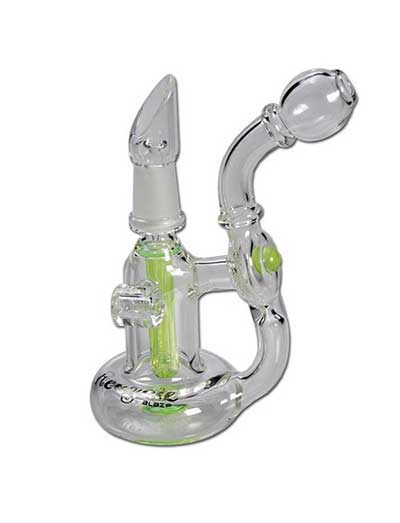
The different materials
There are also many differences in the materials, so you can find all their advantages and disadvantages here.
Glass bongs
Glass is probably the most popular type of hookah, more precisely, the so-called borosilicate glass. This glass was developed for laboratories and can withstand high temperatures. It is very durable, easy to clean and contributes well to the cooling of the smoke. There is also the variety given by the plug systems and their standards and that they are very tasteless. The obvious disadvantage is their fragility; once tipped over, they quickly break. Many manufacturers therefore often use thick glass walls (7mm or 9mm), but these bongs are also more expensive than their "thin siblings".
Acrylic bongs
As the name suggests, acrylic bongs or silicone bongs are made of plastic. This has the advantage that they are more stable and do not break so easily when tipped over. This is particularly advantageous when transporting them. Since they do not have standardised grindings, there are fewer accessories such as diffusers or percolators. They are also not as tasteless as their glass siblings. When smoked, plastics always give off a certain flavour of their own (possibly also harmful substances) in the smoke. They usually stand out because of their bright colours and their size is also within limits. In terms of price, they can be found in the lower price ranges and are therefore affordable for the small purse.
Metal bongs
Bongs made of metal are probably the most stable that can be found. As with acrylic bongs, they are often fitted with an aluminium chillum and sealing ring. The metal also cools the smoke better than others. Due to their construction, however, there is little additional equipment for them. Personally, I was never really convinced by the combination of aluminium, heat and inhalation, and I would always prefer a glass bong.
Ceramic bongs
Ceramic bongs come in all shapes and colours. The material is easier to shape during processing and therefore perfect for making true works of art. With ceramic bongs, the dirt cannot be seen from the outside. Dirt marks are therefore more difficult to remove.
Bamboo bongs/coconut bongs
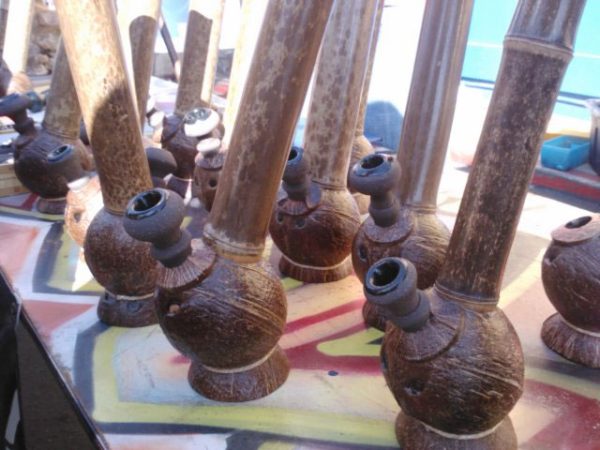
Bamboo bongs, coconut bongs or other wooden bongs are rarely found in our regions. With the right care, they can be used for a long time, but they are usually rather short-lived. Due to humidity, they can even start to mould at some point. However, some people like the slightly woody note that the bongs give to the smoke. They are also visually eye-catching. Another disadvantage is cleaning, which is usually not so easy, especially since they are not transparent.
Fruit and vegetable bongs

Yes, you read that right, fruit and vegetables. Of course, these can't be bought in shops, they are more the home-made variety. Fruits such as melons are popular for this. They are easy to hollow out and release their fruity flavour. With melons, there is also the advantage that the flesh that is removed is still edible. As with frozen fruits, they naturally become inedible after smoking. Logically, their shelf life is also not very long.
Additional equipment
As you have already read, there is also a lot of additional equipment. Almost all of them have the same goal: To make the smoke more pleasant and to filter out pollutants. Some of them have already been mentioned above, but for a better understanding, I will explain their function and construction here. I will also briefly discuss the cut, because this is important for finding the right pieces.
The cut
As you have already experienced, most glass bongs adhere to certain standards. Most often you will come across the dimensions 14mm and 18mm. These are the two standard sizes for glass adapters. For new adapters or additional equipment, it is therefore important to know which dimensions your bong has. There are four different cuts, 14.5mm and 18.8mm are the most common. More rare are 12.5mm and 29.2mm. These are more likely to be found in very small or very large bongs.
Particularly in the case of chillum joints, the glass is prone to breakage. Therefore, there are different ways to secure the cut. In many cases, the cut, i.e. the connection, is outside the bong. Some manufacturers therefore try to provide more safety and stability with a so-called armoured cut. This means that they have very thick glass around the connection, so that breaks when tipping only affect the chillum and not the bong.
Insidecuts are even safer. With these, the glass of the bong is used directly. Here, the cut does not stick out, but is embedded in the material of the water pipe.
Adapter 18mm to 14mm
If it should happen that you have accessories that do not fit your cut, don't panic. There are certain adapters for this case. These are usually available for the next larger or smaller cut. However, adapters that skip a step are rather rare. Of course, it is possible to put several adapters into each other. However, you should also bear in mind that this increases the tension on the ground joint and makes breakage more likely.
Diffuser
Diffusers are built into the adapter, but are also available as an attachment. They are located at the lower end of the adapter, which is inserted into the water. They help to swirl the smoke more finely. The smoke rises in smaller bubbles, is cooled better by the water and is also purified.
Pre-cooler
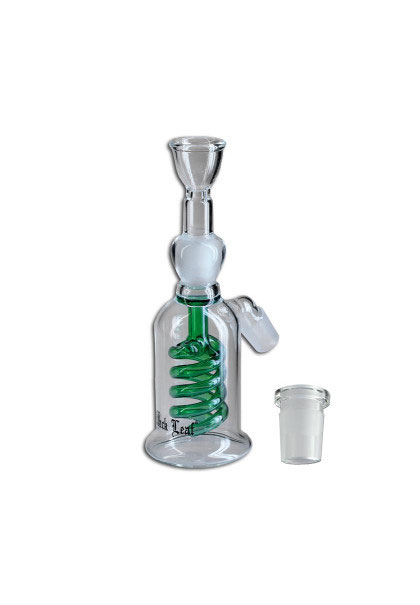
A pre-cooler is a second water reservoir that is inserted like a chillum into the ground joint of the bong. The pre-cooler then contains a second, smaller chillum with a head for the mixture. This way, the smoke is filtered through the water twice and cooled down.
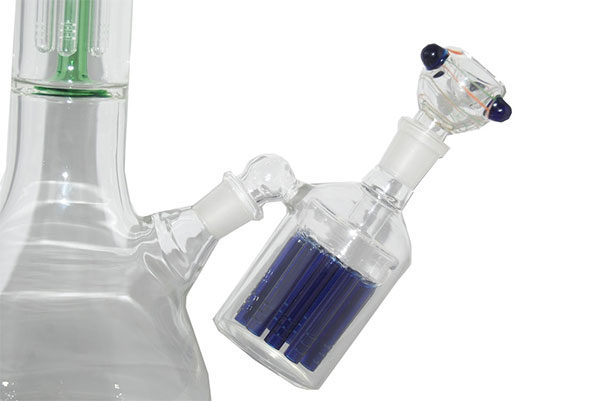
Percolators
You can also get a percolator as an add-on. They are also available as pre-coolers to be used as described above. For bongs with plug-in systems, you can also buy them integrated in the pipe or the lower part of the bong. The same applies to honeycombs.
The following perculators are the most common:
Honeycomb perculator:
Fry perculator:
Showerhead Perc:
Inline Perc:
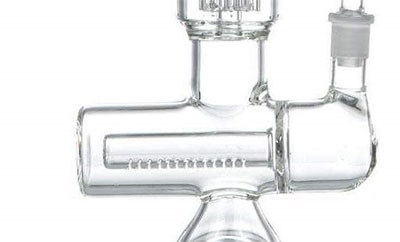
Matrix Perc:
Spiral percolator:
Tree percolator (6-arm, 8-arm, 12-arm...):
Dome percolator:
Frit
A frit is a filter made of porous molten glass. This is able to filter even the finest particles from the smoke. You can find them either permanently installed in a bong, but also as screens for the head. They are simply placed in the head instead of the normal screens.
Adapter/plug-in chillum
When buying the glass bong, an adapter with glass head is actually always already present. Cheaper models sometimes have a standard chillum with a fixed integrated head. The more expensive ones now always come with a plug-in chillum. Such plug-in chillums are needed if you want to use a pre-cooler, for example. They also make it easy to exchange the heads, which makes it possible to use the same bong for smoking herbs and oil or other extracts.
Some tips for the safe use of bongs:
- Give your bong a firm and safe place in the home. Even though they are made of sturdy borosilicate glass, bongs can easily fall over in the home and then break if you tip them over without thinking.
- Throw the monocubes carefully into the bong to avoid damaging the icicles or the glass walls.
- You must only put hot water into bongs that are made of borosilicate glass. Other glass bongs can crack and break quickly when filled with hot water.
- Beginners should approach a bong carefully and start with a small amount. More and denser smoke is inhaled. Those who are not used to this can quickly become extremely flattened. It can be easier for a cough to occur if, for example, you choke on the smoke.
- Always fill your bong with clean water. If the water is dirty, you should change it immediately.
- Always remove old and dirty water from the bong immediately. On the one hand, old bong water spreads an intense penetrating and disgusting smell that sticks to everything (such as textiles, upholstery, furniture), and on the other hand, old bong water creates rims of dirt and limescale in your bong that are more difficult to remove later.
- Do not pour alcohol, sugary drinks, milk or similar into your bong. It leaves deposits, creates a bad taste or is even harmful. If you want to flavour the bong water, unsweetened herbal teas, untreated citrus peels or hydrosols made from roses or other flowers or herbs are suitable.
- More is not necessarily more! It doesn't always have to be the biggest bong with the most additional parts to get the best kick. Keep in mind that elaborate bongs with a complex design are sometimes more difficult to clean and can also break more easily.
- If you build or repair your own bong, be careful not to use any harmful or toxic materials or materials that can melt or catch fire. Glass bongs and acrylic bongs are now very affordable, it is not worth making a "toxic" part with little smoking comfort, unless it is a homemade fruit or vegetable bong.
Armed with this knowledge, nothing should stand in your way of conquering the world of hookah.






